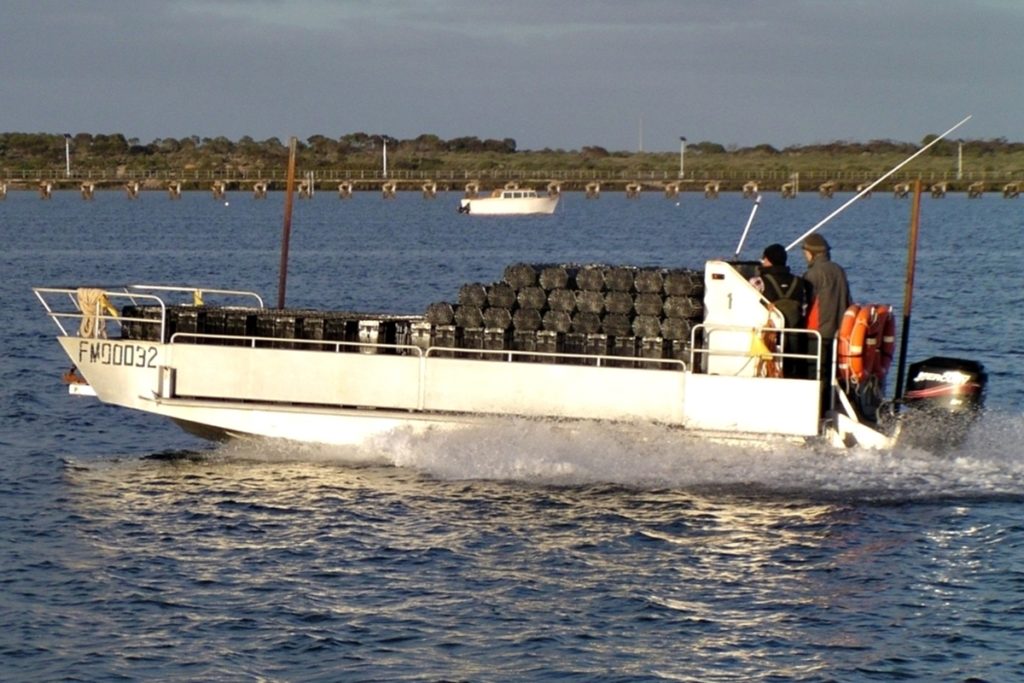
Why Choose Hexcyl Systems?
At Hexcyl Systems we owe much of our success to maintaining strict integrity in our product design, material selection and on-farm testing of components. Our continued focus on design innovation and manufacturing has enabled Hexcyl Systems to emerge as a global market leader of high quality adjustable longline farming equipment.
The aim of the Hexcyl team has been to provide the most robust and efficient infrastructure possible to enable farmers regardless of their size of operation to benefit from the efficiencies inherent in the adjustable longline farming method. The accumulated knowledge from many years of hands-on oyster farming had a profound impact on what key considerations were needed to ensure the design, shape and the dimensions of the oyster basket were truly functional and scalable and would enable farmers to successfully grow their business year on year.
The adjustable long line system offers shellfish farmers the unique ability to raise and lower the growing height of stock on the farm for greater control over management of shell growth, shell hygiene and meat condition in preparation for sale. The layout and construction of adjustable longline infrastructure is relatively straight forward consisting of a row of marine grade timber or plastic support posts set into the seabed with a strainer post set at end of the row to tension and fix the adjustable lines. Conventional rows will likely comprise of two, three or four lines approximately one hundred metres (approximately three hundred and thirty feet) long.
The use of high quality marine grade timber or plastic posts are set out between the end strainers and are usually spaced approximately three metres (one hundred and eighteen inches) apart when orientating baskets along the line and the parallel lines are set seven hundred and fifty millimetres apart for orientating baskets across a set of two lines.
Benefits of Oyster Farming
The holistic approach taken by Hexcyl Systems extends beyond just design integrity. Our company places strong emphasis in adopting the principles of the blue economy model which encourages better stewardship of our oceans for improvement of human wellbeing and social equity, while significantly reducing environmental risks and ecological scarcities.
Hexcyl systems is very mindful of the negative impacts of micro-plastics in the marine environment which is why our unique material selection was critical at the outset of the design process. All materials used in the production of Hexcyl baskets and longline components are selected for robustness and longevity to reduce unnecessary maintenance and replacement and to cope with the rigors faced when operating in the harshness of the marine farming environment.
Despite the fact plastics are recyclable Hexcyl Systems deliberately selected a material for extreme longevity with unique mechanical properties to ensure our products were not destined to prematurely fail and enter the waste stream or fail at sea. The farming of oysters is often perceived as a lifestyle, which in some cases it is, but as with all aquaculture enterprises these activities can be ranked according to scale from subsistence and ‘hobby’ farming ventures to large scale commercial farming operations. The reality is that the activity of intertidal oyster farming is known to be both physically and infrastructure intensive.
A positive aside from the commercial aspect of oyster farming is enjoying the daily physical workout oyster farming offers while being surrounded by natural elements of sunshine and pristine waters of our coastal environments. Regular exposure to such physical environs and activities is well known to benefit the physical and mental wellbeing of primary producers such as oyster farmers and fishers working on the water. The design of Hexcyl components enhances the ergonomics of the adjustable long line farming method enabling growers to easily sustain this regular type of daily physical activity.
Having a low maintenance system with the productivity gains and labour efficiencies further enhances the mental wellbeing of oyster farmers and their employees making for a more profitable and less stressful working environment. The marine environment benefits too from the low impact this style of open farming system has on sea grass meadows and inshore tidal ecosystems compared to many other more traditional rack and rail intertidal farming systems.
The spacing of lines and baskets allows sunlight to penetrate through to the seagrass meadows below with minimal obstruction to water flow across the oyster farming site. The post structures themselves can accumulate and enormous variety of marine organisms further increasing and extending habitat for numerous marine plants, fish and invertebrates.
Oysters being super-efficient filter feeders are renowned for their ability to filter and purify large volumes of seawater each day. Recognition of the important role of oysters in the marine environment has seen global support by many governments including Australia to invest in natural oyster reef restoration programs. The natural oyster reefs provide nursery habitat for a multitude of marine species and is important to restoring the health of many damaged and depleted marine ecosystems.
Fast growing farmed shellfish species like oysters are also a key contributor to the permanent removal of atmospheric carbon entering the oceans through a process of carbon sequestration where the carbon molecules are captured in the production of calcium for shell growth. Oyster farming usually occurs well away from commercial and industrial ports in semi protected bays and estuaries providing employment for many small coastal communities.
Oysters themselves offer excellent nutritional value and are low in fat providing a healthy source of protein, high amounts of zinc, vitamin B12, iron and up to 1,550 milligrams of Omega 3 per serving. Omega 3 has numerous benefits for people with metabolic syndrome. Regular intake of Omega 3 in servings of oysters can reduce insulin resistance, fight inflammation and improve several heart disease risk factors. There is little doubt that oysters and oyster farming activities provide many positive benefits to regional coastal economies and the marine environment.
Mastering the Art of Harvesting Oysters
Fast disappearing are the old methods of hand raking or dredging wild oysters from the seabed or chipping off oysters that attached naturally to wooden sticks or shell culch. You are more likely to now witness the newer farming practices that have evolved from the expanding production of hatchery reared single seed oysters.
The newer farming practices evolving from the increased access to single seed oyster spat involves the use of a variety of surface floating, subtidal and intertidal farming systems. You are increasingly likely to see successful commercial farming of oysters being conducted utilising baskets instead of sticks and trays in purpose build oyster sheds using electronic and mechanical grading equipment rather than the antiquated, mundane hand sorting and culling methods used in centuries past.
Although the farming of oysters can be traced back more than two thousand years it has only been the latter part of the 20th century that oyster farming has had any significant technological gains. The past 40 years has seen the increased success of hatchery production leading to the development of new farming systems aimed to improve consistency of oyster productivity in many of the shellfish growing regions around the world today.
The efficiencies of modern farming technologies allows for an increase in quality and uniformity of shape in farmed oysters. Improved productivity through greater recovery rates of oysters of a higher marketable quality now achieve higher returns for farmers particularly for whole live and half shell oysters destined for the high end retail and restaurant trade.
Generally oysters produced in a hatchery are more likely to be handled more often throughout their grow-out cycle. This ability to handle oysters at various stages of the grow-out enables farmers to better manage consistency of shape and uniformity of size in their oysters in preparation for sale.
Oysters housed out on the farm in Hexcyl baskets are unclipped off the adjustable longline infrastructure and loaded on to boats to be taken ashore. Once ashore the oysters are emptied from the baskets and put over either a mechanical or electronic grading machine to size and count oysters for sale or to be refilled into clean baskets to be returned to the sea to be hung back on the lines to continue their grow-out.
